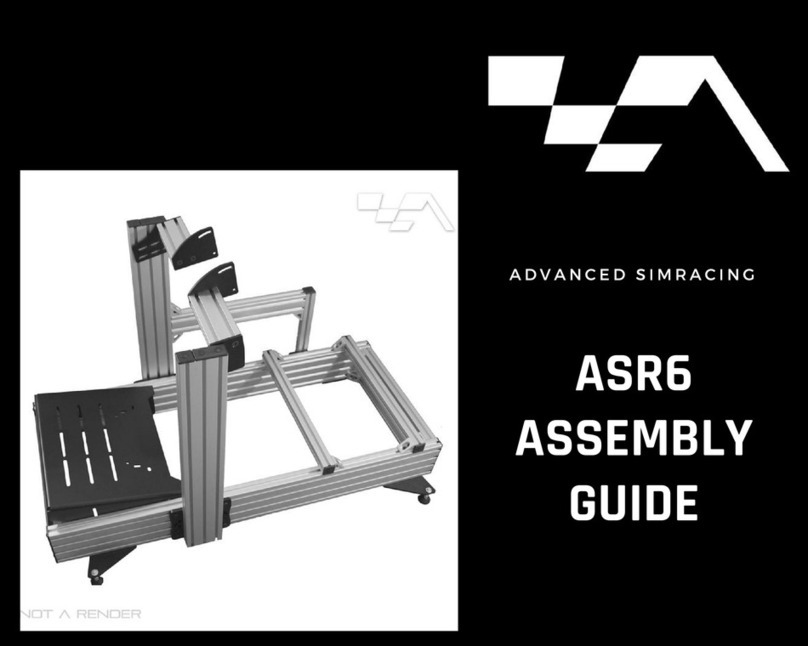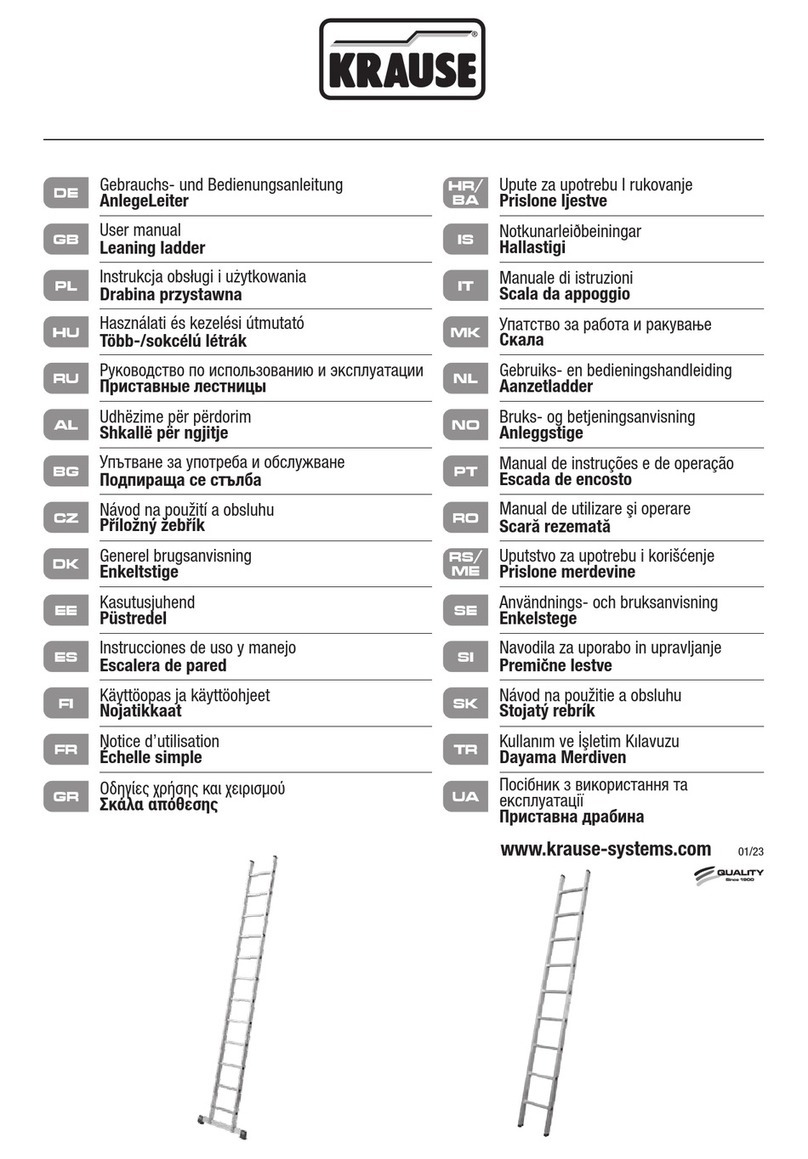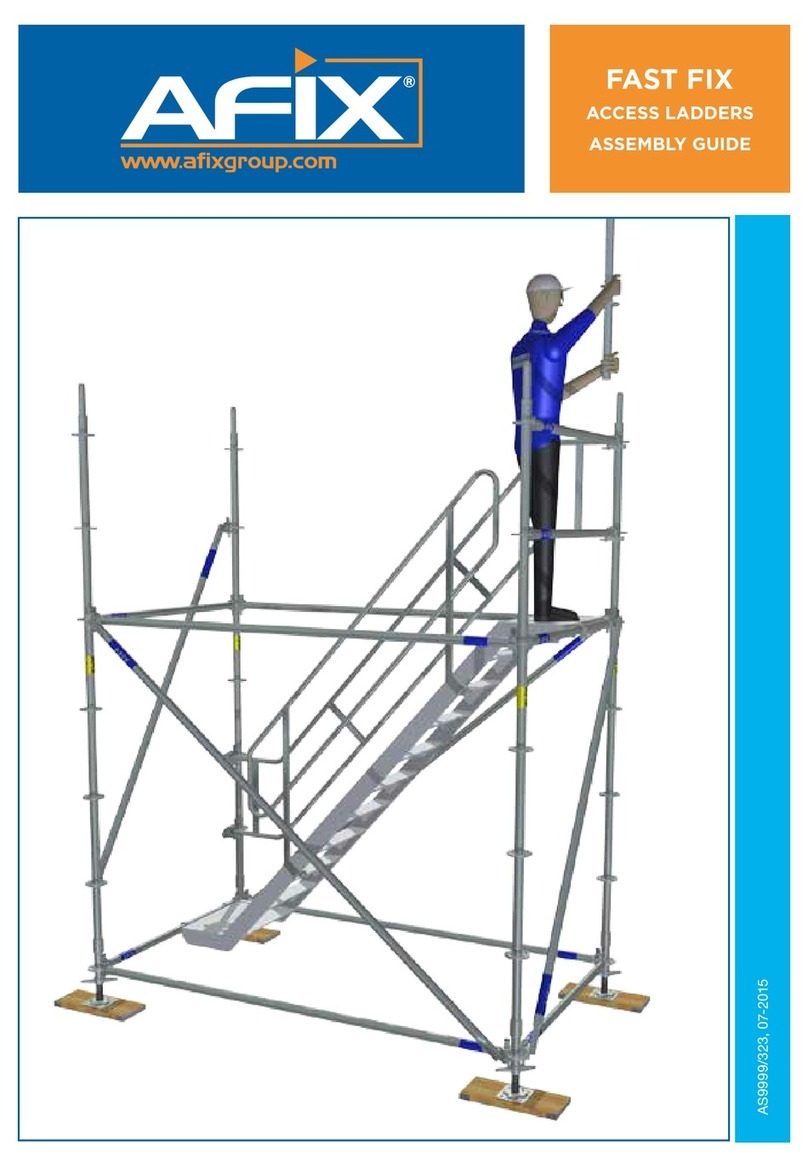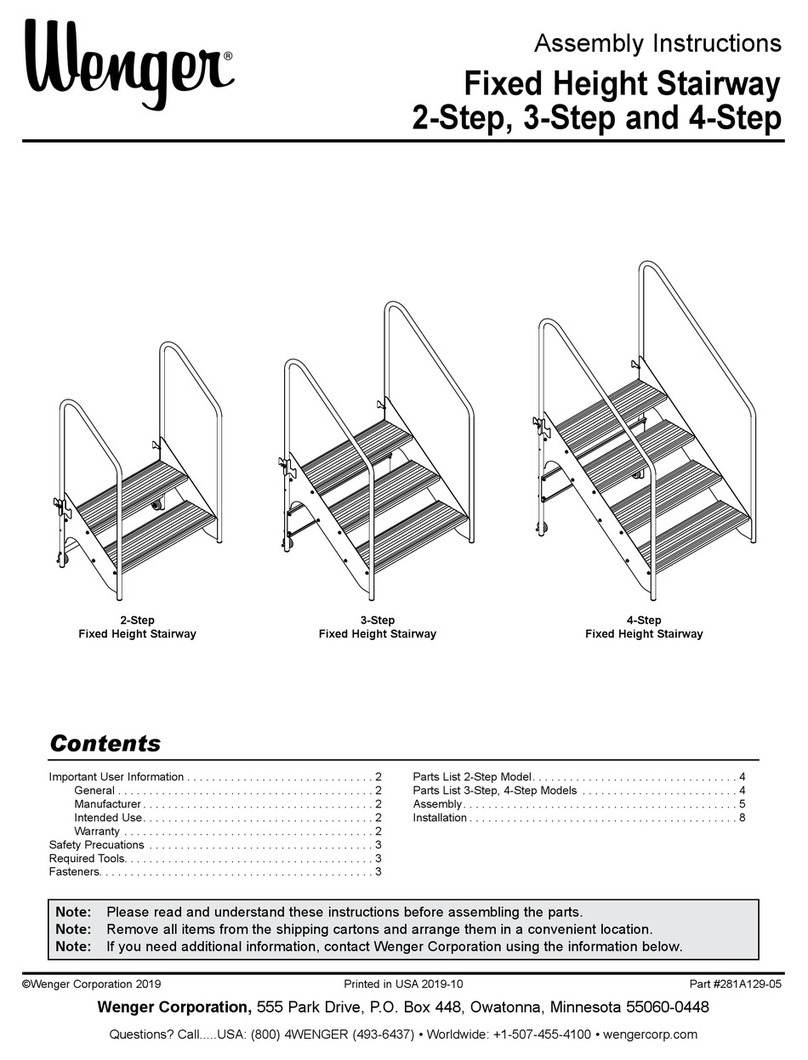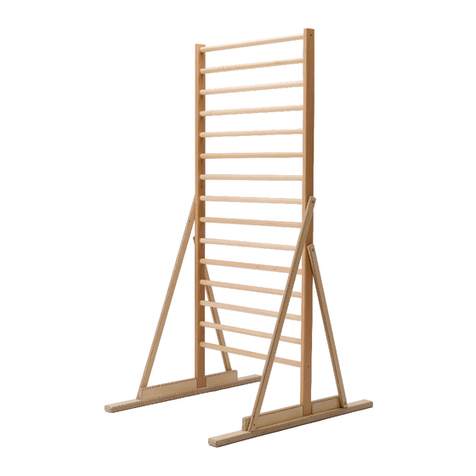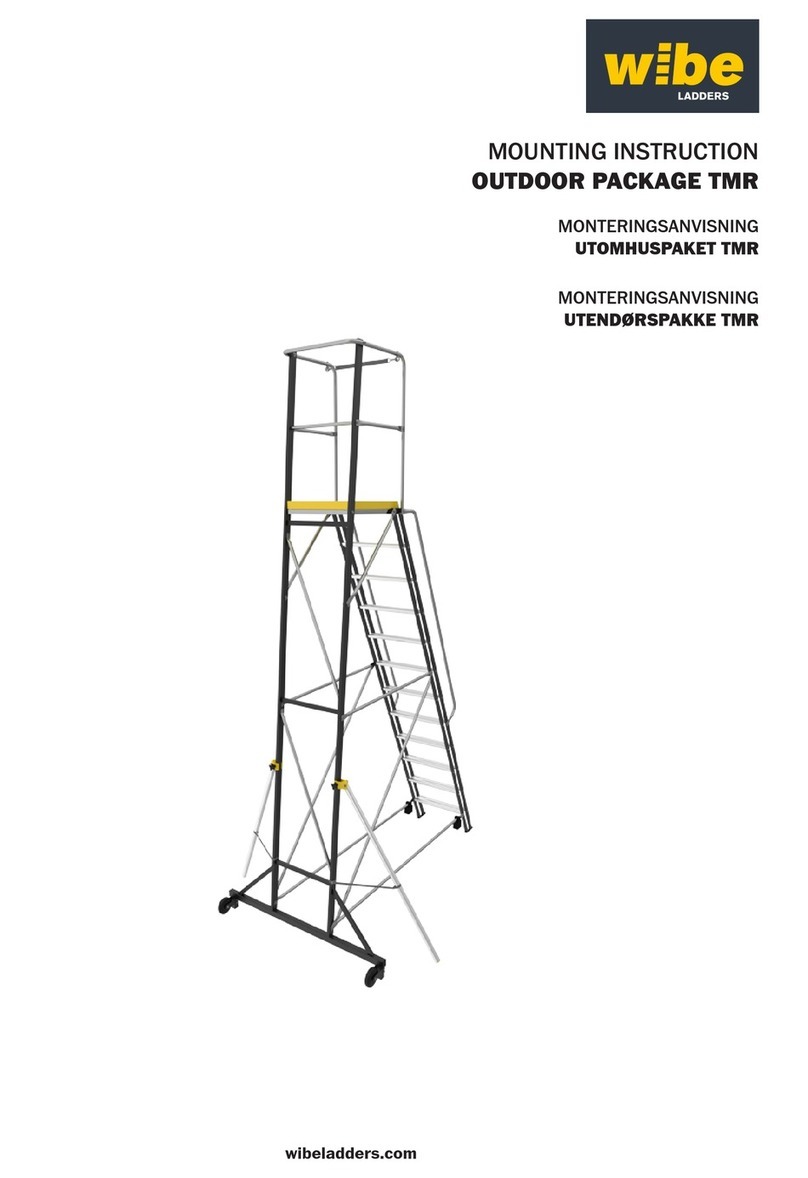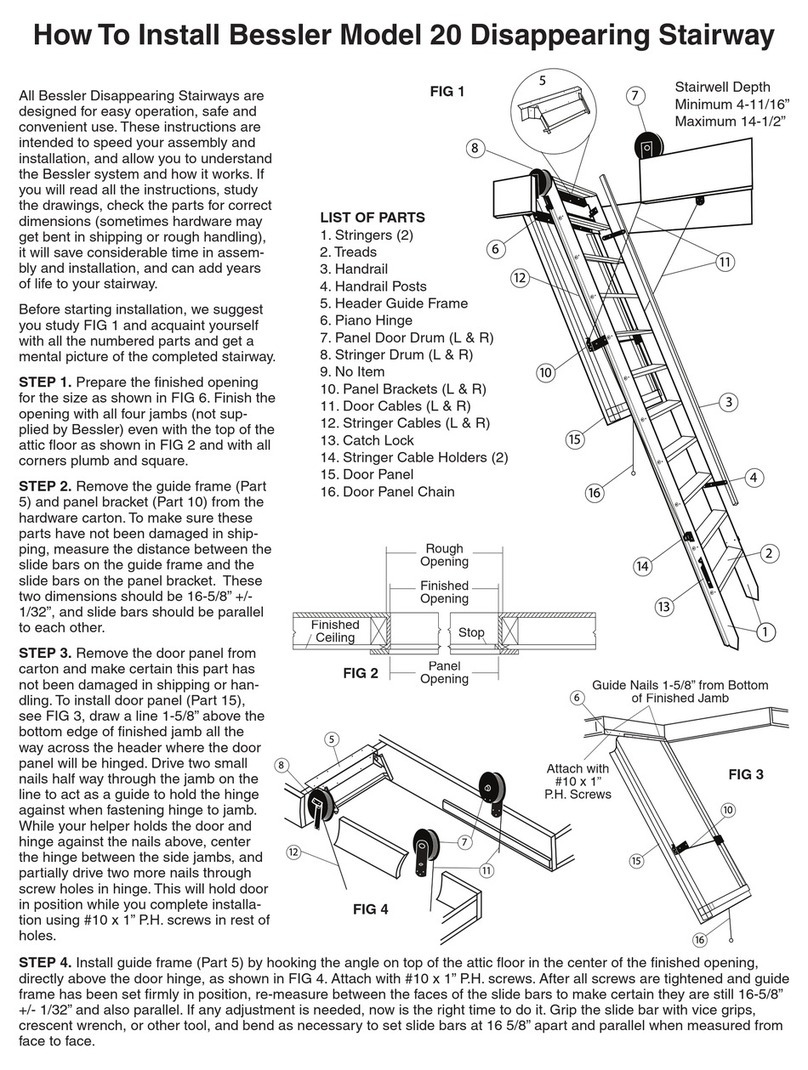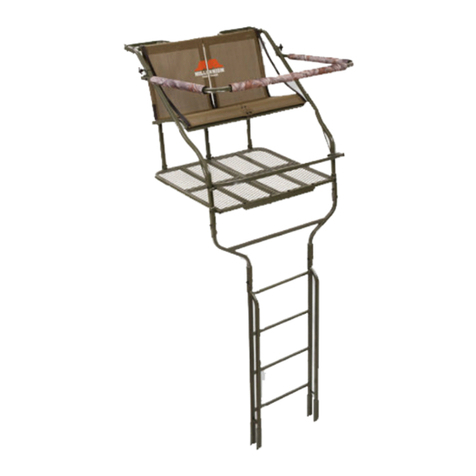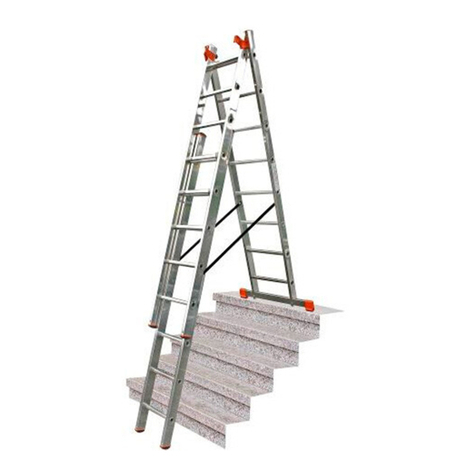
User Manual
V1.7 2021 Copyright SafeWaze Page 1
This product is part of a complete fall protection system. User’s must utilize, and connect to the Safewaze
Ladder Climb System with ANSI Z359 compliant restraint or Personal Fall Arrest Systems (PFAS). This product is
not designed, nor should be used as a component for a Postioning, Suspension, or Restraint. A PFAS is typically
composed of a Full Body Harness, Anchorage, and a Connecting Device. Connecting Devices used with the
SafeWaze Ladder Climb System are Energy Absorbing Lanyards (EAL’s) or a Self Retracting Device (SRD). The
connection point to the FBH for use of a SafeWaze Ladder Climb System is the Sternal (Front) D-ring.
WARNING
These instructions must be provided to any person utilizing this equipment. The worker must read and understand
the manufacturer’s instructions for this, and all other components of the complete Fall Protection System. It is
expected that all personnel be fully trained in the safe installation and use of this equipment. These instructions
must be followed for the proper use, maintenance, and inspection of this equipment. These instructions must
be kept and made available to worker’s at all times. Any alteration, misuse, or use of this equipment outside the
scope of the manufacturer’s instructions, may result in serious injury or death. A comprehensive Fall Protection
Plan must be kept on le and available to all employees at all times.
Consult your doctor if there is reason to doubt your tness to safely absorb the shock from a fall arrest. Age
and tness seriously affect a worker’s ability to withstand falls. Pregnant women or minors must not use this
equipment. Failure to heed this warning may result in serious injury or death.
Never exceed the maximum allowable capacity of your fall protection equipment. Never exceed the maximum free
fall distance of your fall protection equipment.
Do not use this system or any other part of a PFAS that fails pre-use or other scheduled inspections. For any
questions or concerns regarding the use of this equipment, for an application not specied in this manual, contact
SafeWaze technical support.
Additional precautions should be used when working in environments of high heat, electrical hazards, chemical
hazards, explosive or combustible chemicals, toxic materials, sharp edges, or where equipment used above could
topple onto a user below, or their fall protection equipment.
Contact SafeWaze if you have questions, regarding compatibility of this equipment, that are not covered in this
manual. Do not alter or misuse this equipment. Some subsystem components could affect the performance and
the operation of this equipment. Do not anchor this product to moving machinery, or hazards that have chemical,
electrical or gaseous characteristics. Failure to comply with this warning could result in serious injury or death.
Use of a body belt for fall protection applications is not permitted. Only use an approved Full Body Harness.
Inspect all components of this system prior to to each use and at least annually. Inspect in accordance with the
user instructions. If this equipment is exposed to the forces of a Fall Arrest or Impact Force, the equipment must
be removed from service and inspected by a Competent Person prior to being used again.
Do not connect to the Ladder Climb System while it is being installed. When unpacking the cable assembly, ensure
that proper PPE is used as cable may rapidly uncoil when released from packing. Connections of a Full Body
Harness (FBH) to the system must be made with approved connections only. The cable assembly included with this
system, is the only cable constituent authorized for use with the system.
Personnel must always maintain 3 points of contact during climbing operations. If utilizing components from
different manufacturer’s, ensure that all components are compatible and meet all applicable standards, codes, and
requirements. Before using this equipment, consult with a Competent and/or Qualied Person.
Make considerations for eliminating or minimizing all swing fall hazards. Swing falls occur when the anchor is not
directly above the location where a fall occurs. Always work as close to in line with the anchor point as possible.
Swing falls signicantly increase the likelihood of serious injury or death in the event of a fall.

